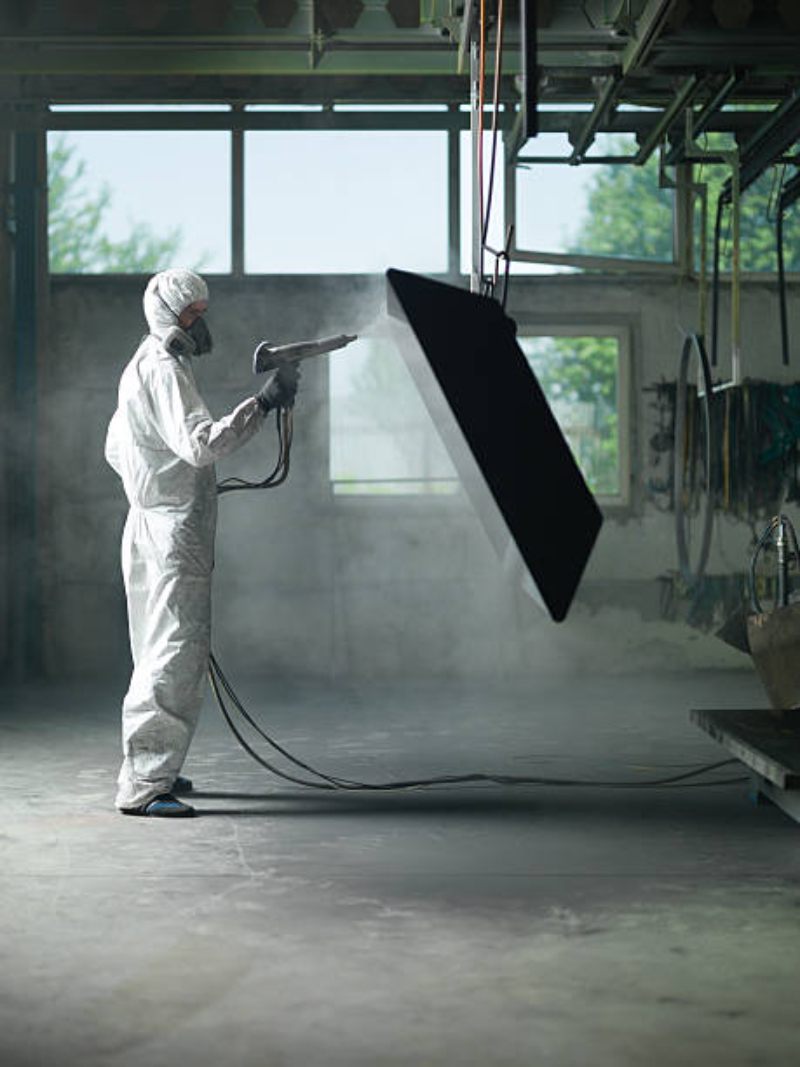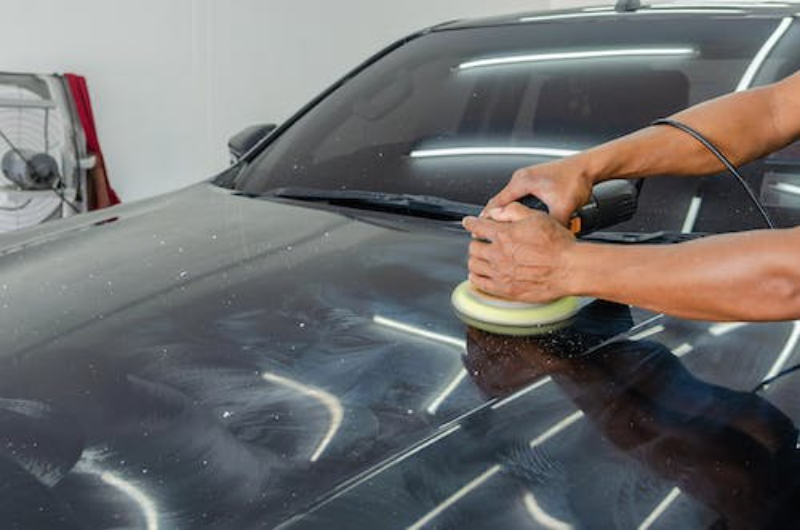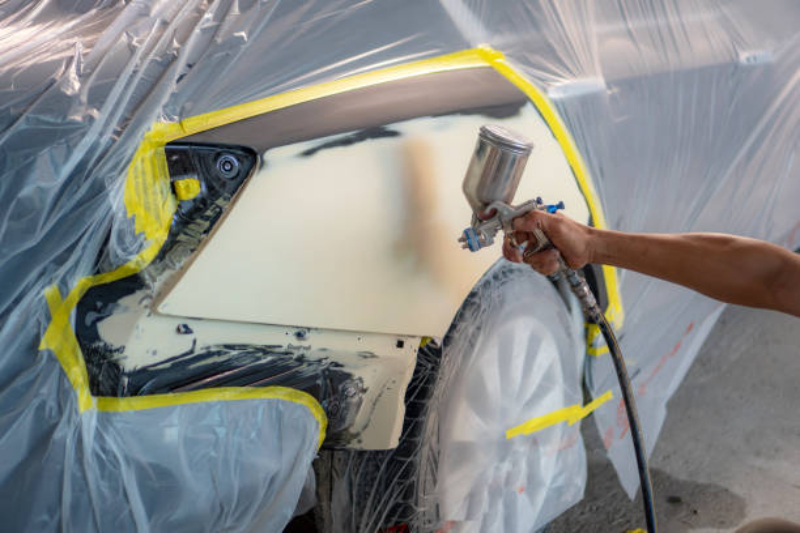Find out how sand blasting used in vehicle painting. We look at vehicle spraying and when sand blasting is used to prepare the vehicle.
What Is Automotive Sandblasting?
Automotive sandblasting is the process of removing paint, rust, body filler and other elements from the surface of a car's body. Like acid dipping, it can seem like a drastic cleaning process for car owners, and it is best to learn all you can about the process before subjecting your car to it.
Only once you've completely understood the process can you decide if it is appropriate for your car. Essentially, automotive sandblasting leaves your car's surface as bare metal, which can then be coated in new layers of primer, a rust inhibitor to prevent flash rusting and paint. It is a necessary process for those wanting to refinish their car and get it looking brand new again.
This article will take you through the automotive sandblasting process to help you decide whether it is appropriate for your vehicle. In short, the process involves smoothing or scrubbing the paint, rust and body filler from your vehicle with the aim of repainting it once finished.
What Causes Vehicle Paint to Fade?
Rather than using the old-school method of removing these layers by hand with sandpaper and a wire brush, sandblasting uses more modern methods. You can fire abrasive materials at your car's surface to remove rust and paint with sandblasting equipment that usually resembles a leaf blower.
These abrasive materials include, but are not limited to:
Crushed Plastic
Crushed Glass
Copper Slugs
Steel Grit
Aluminium Oxide
Which Method Is Best for blasting the Steel Body of a Car?
Of all the automotive sandblasting methods available, dustless sandblasting is the best for steel car bodies. This is thanks to the water that is combined with the abrasive materials during the sandblasting process.
The water-based blasting helps to reduce the friction and excess heat caused by the abrasive material hitting the car body, which can lead to metal warping if not mitigated.
It is claimed that dustless sandblasting can reduce the surface temperature of the steel body of your car by up to 10 degrees during the sandblasting process.
This is essential if you want to avoid the risk of warping the steel. If the steel body of your car is particularly thin, then dustless sandblasting is the perfect solution when you want to remove dirt, rust and paint immediately.
If you cannot access a dustless sandblasting service, you might get away with applying a cooler to other abrasive materials used during the process. Some sandblasting services might suggest soda blasting.

However, while soda blasting doesn't produce much friction and is less likely to warp your vehicle's body, it is not the safest sandblasting method. When used outdoors, soda blasting creates dust that is toxic to plants and grasses. It is not toxic to humans, but it can have a significant impact on wildlife.
Choose a sandblast media.
All this begs the question, what is the best sandblast media for the job? Naturally, different media are better suited to different jobs. For example, when choosing an abrasive material, you will need to consider which part of your car you will sandblast and how often you plan to sandblast it
This is because different media will provide greater or lesser levels of abrasion, with tougher media being unsuitable for thinner or weaker materials. The underbody or frame of most cars is typically made from steel, therefore making it much stronger and able to handle greater levels of abrasion from tougher sandblast media.
However, the actual body of most cars is usually constructed from thinner materials, meaning they are far more likely to warp or become damaged when subjected to automotive sandblasting. Some universal sandblasting mediums you can use on pretty much any surface of your car include fine grit, baking soda and crushed glass.
Again, while it can have a serious environmental impact, baking soda is the easiest media to use. Along with crushed glass media, you do not need to be as precise in terms of pressure control. This is usually done to protect certain weaker parts of your car from damage with more abrasive sandblasting media.
Protect fragile areas of the car
One of the main areas that require additional protection during the sandblasting process is the windows.
Given the high pressure and impact of the abrasive materials, you will need to adequately protect your window glass against damage.
The easiest way to guarantee his protection is to simply keep the nozzle of your sandblasting equipment away from the windows, which professional sandblasting specialists will be trained to do.
Alternatively, you can cover the windows with layers of protection to prevent the sandblasting media from reaching them.

One form of protection is thick rubber linings often used as roof coverings. Securing these linings over the window glass ensures it is protected against the blast media and saved from potential wear and damage. This is especially important for classic cars or classic vehicles you want to protect while sandblasting.
Adjust blast pressure settings
Once you've chosen the most appropriate sandblast media, the next factor to consider is your pressure settings. Setting your sandblast pot to the appropriate levels will ensure the car can be stripped of paint and rust without damaging the underlying metal.
Again, professional sandblasters will have professional training and know which pressures are best for different blast media and car body materials. A general rule for choosing the right sandblasting pressure is to start low and gradually move to higher air pressures.
This way, you can slowly work up to the right pressure to remove the paint and rust from the car body work without damaging the metal. The areas where accurate pressure control is most important are the bonnet, door panels and door handles, where the metals are usually the thinnest and are most susceptible to warping or damage.
Different media also work better at different air pressure levels. For example, crushed glass works best at pressures below 25-35 psi for effective paint removal. If you feel you need to increase the air pressure of your sandblasting equipment, practising on a scrap piece of metal is the best way to test it.
Using a piece of scrap with a similar thickness to your car bodywork is the best way to do this. By practising first, you can test whether the pressure you think you need will warp your car's panelling.
Avoid excessive heat
The final thing to bear in mind when sandblasting your car's bodywork, after you've chosen the right media, protected delicate areas and found the right air pressure, is avoiding excessive heat.
In the sandblasting process, this heat is generated through the friction of the blast media at it hits the metal bodywork.
This is where the risk of warping thinner metals comes from. Excessive friction leads to excess heat, which increases the chances the thinner metals on your bodywork, such as the panel strips, will warp.
Again, one of the best ways to avoid this is by adding a vapour blast attachment to your sandblasting equipment.
This device injects water into the blast media to help cool the metal by reducing friction.

Vapour blasting isn't always a necessity, but it can make the process much easier since you will have less to worry about. Besides considering whether to use a wet blast attachment, proper blasting technique is the next best way to protect your car's bodywork.
Essentially, you want to avoid blasting a single area with the abrasive material for too long. Only blast an area long enough to remove the rust and paint before you start blasting the next.
If you manage a commercial fleet, you may experience one of these common types of truck accidents. Following an accident, you will need a professional team for your HGV spray painting and sand blasting. For HGV sand blasting in Doncaster and Scunthorpe, follow the link below.
.jpg)